The Italian publisher, editor and collector Franco Maria Ricci has died at the age of 82. In sumptuously produced art books, and as editor of the bi-monthly art magazine FMR, Ricci published writing by Jorge Luis Borges, Italo Calvino, Umberto Eco, Roland Barthes and many others over the course of his long and distinguished career. In 2019, Susan Moore visited his estate at Fontanellato, near Parma, where in recent years Ricci had constructed the largest labyrinth in the world out of bamboo; they discussed Ricci’s notable collection of largely 18th- and 19th-century sculpture and paintings, as well as his library of books published by the great typographer Giambattista Bodoni, whose works Ricci had reprinted in his first foray into publishing. The interview is published in full below.
Collecting may be read as a form of autobiography written with works of art rather than words. In the case of Franco Maria Ricci, his is a life composed of both words and pictures. He has not only published the most lavishly produced art magazine – FMR – and art books in the world, but also spent the last 50 years amassing a peerless collection of volumes produced by the great Italian typographer, compositor and publisher Giambattista Bodoni (1740–1813) and a rich, eclectic collection of some 500 largely neoclassical and baroque paintings and sculptures. Both collections are at the heart of his most recent and extraordinary venture, the creation of the immense, star-shaped Labirinto della Masone, near Parma, the largest labyrinth in the world – and surely one of the few planted with bamboo.
There is something surreal, and slightly disturbing, about turning off the autostrada and suddenly encountering this majestic bamboo structure rising 10m or more above the plains of the Po valley. For all its elegant calligraphic stems and angular leaves, this is not the sparse specimen bamboo of Chinese ink-painting, but a forest. Here, more than 200,000 of these fast-growing bamboos arch upward in their quest for light. Once I turn into the drive of what was originally Ricci’s grandfather’s estate at Fontanellato, the brilliant azure June sky all but disappears. By the end of my two-day visit, it seems that the contrasts of light and dark are an apt metaphor for the book and art collections – and for the entire complex of maze, museum, archive and chapel, the latter built in the form of a pyramid. Ricci has always been part rationalist, part visionary.
Ricci’s story begins with the book. ‘I grew up surrounded by my father’s books. Reading Shakespeare, Homer, Joyce and Dante saved me from bad taste,’ he once said. ‘It made beauty simple, familiar and immediate in my eyes.’ It was a book, too, that transformed his life and launched a long and successful career: Bodoni’s Manuale tipografico, first published in 1818. Before his discovery of Bodoni’s works in the Biblioteca Palatina in Parma in the 1960s, a career in publishing seemed unlikely. The stylish Ricci, a racing driver and a dandy with dark cherubic curls, was best known for patterning the snow in the piazza around Parma Cathedral with the wheels of his E-type Jaguar. Even Bernardo Bertolucci remembered that car.
As a young man, Ricci had wanted to study archaeology, but an uncle in the oil world persuaded him to sign up for geology instead. After three months in Turkey spent looking for oil that was not there, he realised the oil business was not for him. Yet his education proved critical in unlikely ways. He spent weekends exploring the mysterious, labyrinthine underground tunnels and caves that are a feature of the Romagna region of Italy. He also designed posters for Parma University’s theatre festival that caught the attention of an American curator preparing a show of Italian design in New York. He became, inadvertently, a graphic artist, and went on to create striking graphics for everything from Poste Italiane to Alitalia.
Ricci has long insisted that ‘Bodoni was not only a typographer. He achieved modernity and elegance through graphic art. He was, like Canova, a champion of neoclassicism but in two dimensions. I immediately fell in love with the proportions, the concept of beauty.’ Bodoni’s genius was not simply the freshness, rigour and precision of the typefaces, with their dramatic contrasts between thick and thin line, but also his sense of how to lay out a page. Texts are set with extravagantly wide margins and with little or no decoration.
Ricci decided to reproduce the master’s Manuale tipografico, although everyone told him he was mad to do it. He bought two early offset typography machines which, he noted, were ‘as expensive as a Ferrari, which I wanted to buy but never did’, and had the highest-quality paper made exclusively for the project by Fabriano. It took a year to publish the three volumes in 900 numbered copies (1964–65). ‘So I became a publisher. It became a bestseller.’
Much to his mother’s horror, Ricci decided to continue to publish very expensive books – art books printed in Bodonian style – and later, literary editions, several series of which were edited by Jorge Luis Borges, whose presence looms large in library and labyrinth. At a time when Arte Povera dominated the Italian avant-garde, Ricci chose opulent black silk covers embossed with gold, and printed on costly pale blue Fabriano paper with handmade plates. He wanted his books to be rare – printing small editions – but also surprising. He gave Roland Barthes, Umberto Eco, Italo Calvino and Borges free rein to write accompanying texts.
His wife Laura Casalis remembers having been struck by the originality of Ricci’s 1970 book on the then little-appreciated Erté – text by Barthes – before she met the publisher himself in 1975, and soon found herself working on a book on red paper-cut portraits of Mao, accompanied by 39 of the Chairman’s own poems printed in Chinese characters. ‘Little by little I slipped into publishing with him – Franco was a workaholic and I realised that was the only way I would see him. Those Mao paper-cuts were typical of the practically unknown subjects that he would seek out all his life, and we sometimes show them between loan exhibitions in the museum. Franco has l’occhio lungo – he can see beauty in something which may take others a long time to recognise.’
It is in the library I find Ricci and, indeed, where he is to be found most mornings and afternoons. It is part of a cluster of picturesque 19th-century stone buildings surrounded by lush and increasingly exotic gardens. He had begun renovating the dilapidated stables behind his grandfather’s long-abandoned villa as a summerhouse and library in the 1970s, and its enormous hayloft still serves as an idyllic open-air dining room and entertaining space, even though the couple have now moved into the main house. Inside this romantic half-ruined folly, Ricci created the unexpected: two neoclassical library rooms lined with bookshelves and marble busts, their domed and coffered ceilings reminiscent of those in the Biblioteca Palatina.
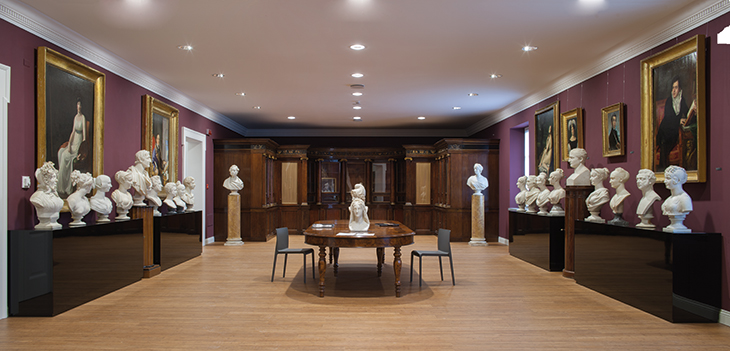
In the centre of the Napoleonic Gallery, which contains busts of Wellington and Napoleon placed opposite each other, is a model of Canova’s bust of Dante’s Beatrice (after 1817). Photo: Maura Davoli
As soon as we arrive in the inner sanctum, the Bodoni library with its more than 1,200 volumes – missing a tantalising three or four tomes but otherwise complete – Ricci is immediately up on his feet and pulling down and opening cherished volumes, eyes blazing. Despite the heat, he wears an elegant embroidered linen waistcoat but not its jacket, which hangs nearby, bearing the synthetic red flower that became in effect his iconographical device. (Tai Missoni gave him a cardigan as a present: Ricci declined the gift – he does not wear cardigans – but declared that he would always wear the red flower from its packaging thereafter, which he did. Once, when he had forgotten the flower, an officer at the Alitalia desk at Milan airport said: ‘I see you are travelling incognito today Mr Ricci.’)
Now Ricci deftly presents Bodoni’s Essai de caractères russes… of 1782, and his 1789 edition of Torquato Tasso’s pastoral play Aminta, exquisitely illuminated for the Prince of Essling. These are dear friends and the joy as he handles these pages is self-evident. This is the only significant part of the collection not to have been moved down to the museum and archive complex, a short bamboo-lined drive away. It is clear that he could never bear to live apart from these books.
The impetus to create the long-imagined labyrinth, and a museum and library to house his collections and publishing archive, was a diagnosis of Parkinson’s disease. The couple sold the publishing house in 1982, and their house in Milan, and moved to Fontanellato. There is a fierce pride in Laura Casalis’s voice as she explains: ‘Franco wanted to do it, he imagined it, and he found the right team of people to help him realise it.’ We are sitting over coffee in the Labirinto courtyard surveying the sharp-edged geometries of its rose-pink brick buildings, a place that already has the air of a lost ancient city discovered in a jungle. Laura describes the evolution of the museum collections within, and recalls the words of the late Italian publisher Valentino Bompiani, who described Ricci as a man of courage and fantasy.
‘Whenever he fell for some subject or artist, Franco would try to buy.’ Laura continues. ‘He was never concerned with what was or was not fashionable, and never bought to decorate a house. He collected pieces that he liked that were strange or unconventional.’ He began with Art Deco, first buying inexpensive little bronze and chryselephantine dancers by the likes of Demétre Chiparus (1886–1947), as well as Guiraud-Rivière’s dramatic figure of Isadora Duncan with two bears, which dominates the central space of the 20th-century gallery in the museum.
Here, too, are three paintings by the outsider artist Antonio Ligabue (1899–1965), a tormented soul who had led a tragic life, painting and wandering around the Po valley when he was not confined to a psychiatric hospital. Ricci published the first monograph on the artist in 1967, two years after his death, a work that helped catapult the artist from provincial to national and then international fame. Two years later, he bought two of the artist’s bold, visceral close-up heads of roaring tigers, painted in the 1950s, including the key work that had been selected for the book cover. A no less bright and richly impasted self-portrait in the guise of Vincent Van Gogh followed a year later.
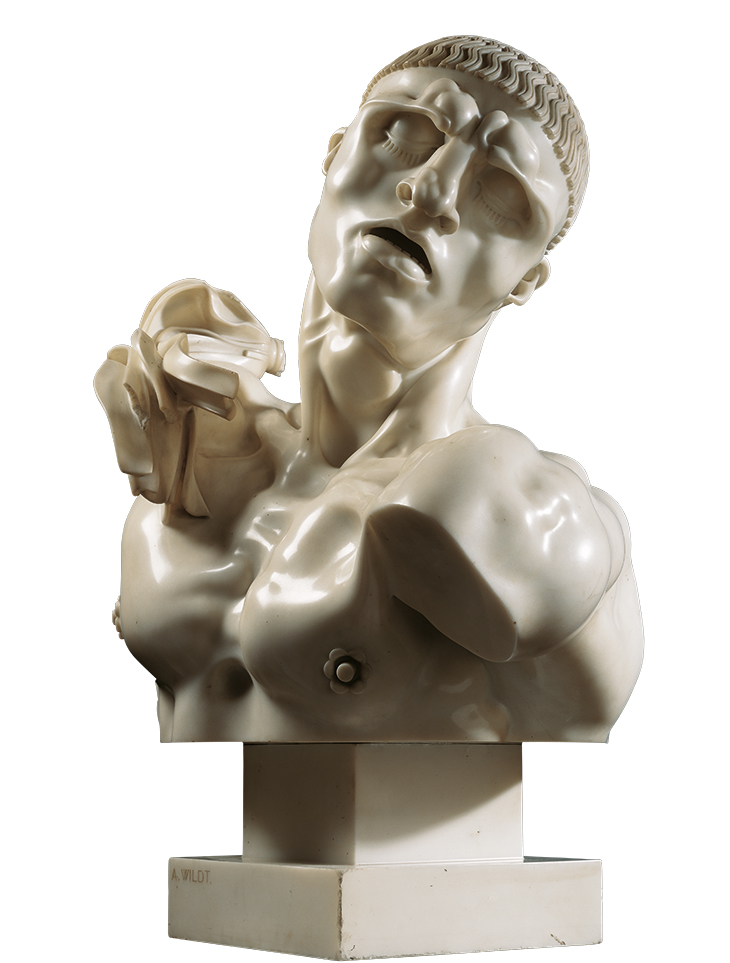
Vir temporis acti (1913), Adolfo Wildt
Ricci also championed – and collected – the work of the third dominant presence in this space, Adolfo Wildt (1868–1931), often described as the last Symbolist but one whose reputation was, as Laura puts it, ‘tarnished by Fascist association’. Ricci published a monograph in 1988, the same year that he acquired the strange masterpiece that is Vir temporis acti of 1913, a virtuoso marble bust of a Greek or Roman soldier reimagined through the combined lenses of Michelangelo and the Secessionists. The expressive anguish of this head may be seen as a symbol of the nobility and redemption of sacrifice, but it is the refined and gleaming silken surface that led to Brancusi.
Ricci has a penchant not only for sculpture but also portraits, and portrait busts in particular. ‘I have hunted portraits all my life. I never get tired of looking at them,’ he confesses, ‘and in turn, I feel observed by them.’ In the 1990s, he began following the art market and collecting in earnest. Ricci had an office, bookshop and apartment in Paris and there and in Monaco he was to acquire many of his largely French 18th-century terracottas, some of the most compelling by less familiar names. A superb example is the bust of an intense, low-browed individual, signed by one A. Riffard and given the Revolutionary date of ‘9. Fructidor an 3e’, from 1794–95.

Maria Antonia Ferdinanda di Borbone (c. 1780–85), Francesco Orso
Another naturalistic tour de force is one of very few known terracottas by Francesco Orso, also known as François Orsy, a Piedmontese sculptor also active in Paris. Orso is responsible for the rarest sculptures here: the disconcerting life-size polychrome wax portrait busts of Vittorio Amadeo III of Savoy and his wife Maria Antonia Ferdinanda di Borbone, complete with painted papier-mâché clothes. The revolution destroyed the sculptor’s courtly patronage in Paris, and he diversified into the more overtly commercial world of the waxwork with a show featuring an effigy of the aristocratic revolutionary leader the Comte de Mirabeau and popular tableaux on themes such as Marat’s assassination by Charlotte Corday.
Unsurprisingly, given Ricci’s passion for Bodoni, the neoclassical looms large. At the centre of the Napoleonic gallery, lined with marble busts – Italian, English and Danish – is a model of Canova’s ideal head of Dante’s muse Beatrice, first conceived as an idealised portrait of Mme Récamier. The display offers a witty face-off between Wellington and Napoleon on opposing pedestals, but the emperor prevails with a sequence of classicising family portraits. Above hangs the second version of Francesco Hayez’s The Penitent Magdalene (1825). Here the Romantic artist has transposed the chilly perfection of Canova’s marble surfaces into pigment.
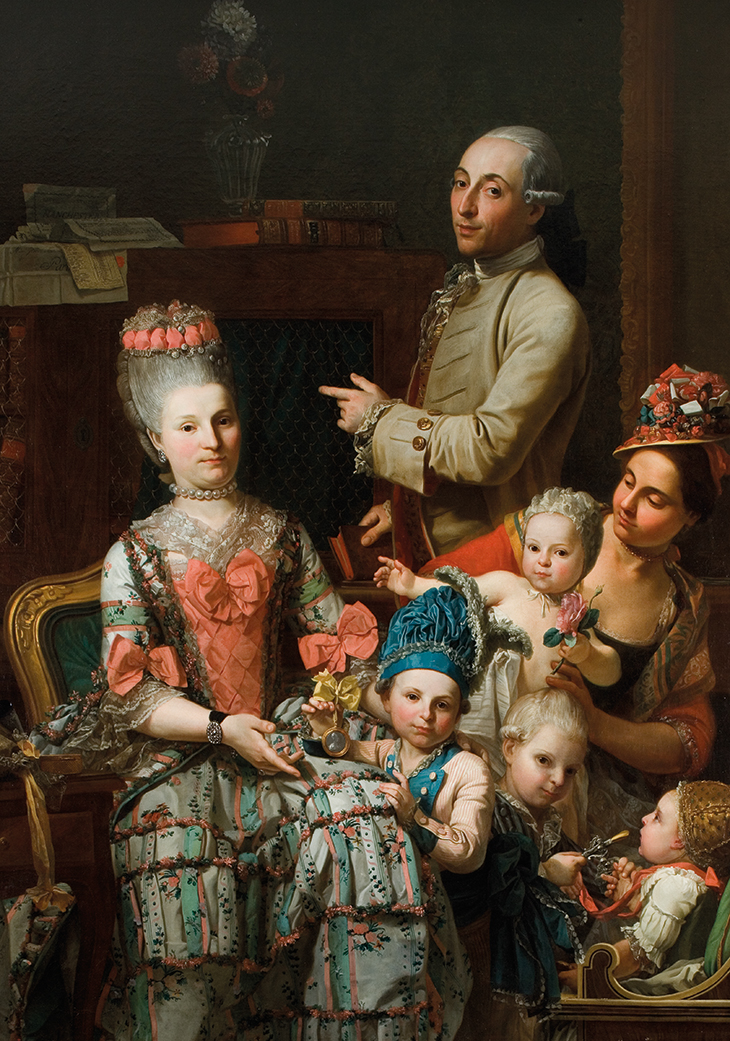
Portrait of Antonio Ghidini and His Family (c. 1780), Pietro Melchiorre Ferrari
An unusual and endearing mid 18th-century Italian group portrait presents the family of Antonio Ghidini, a cloth merchant to the Bourbon court in Parma, painted by his friend, the court artist Pietro Melchiorre Ferrari (1734/5–87). In this Zoffany-style conversation piece there is no doubting Ghidini’s business, as he points to documents mentioning his association with his trading partners in Manchester and his wife sits stiffly under her salmon-pink stomacher in sprigged and striped silk finery.
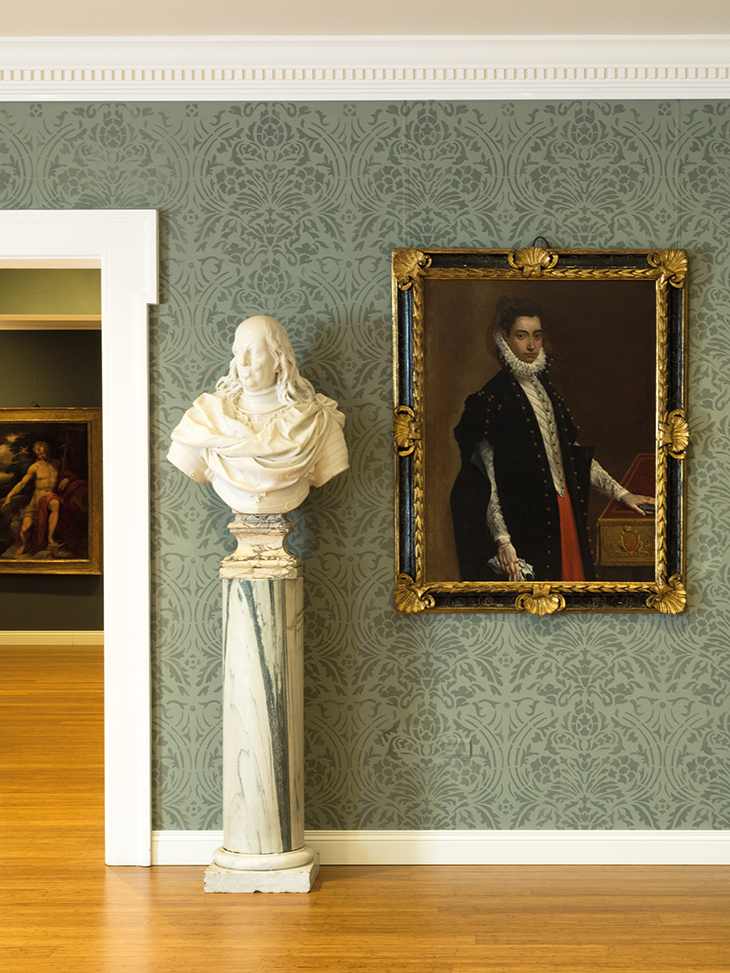
On the left is a marble bust of Ferdinando de’ Medici (c. 1685) by the school of Giovan Battista Foggini; on the right hangs Portrait of Lucrezia Bentivoglio Leoni (1589) by Ludovico Carracci (1555–1619)
Yet it would be misleading to suggest that Ricci’s ever-curious eye never ranged beyond the 18th and 19th centuries. He owns a number of 17th-century marbles, including that of the all-powerful prelate Cardinal Paluzzo Paluzzi Altieri degli Albertoni, who effectively ran the papacy under Clement X – irresistible in profile. In the 2000s Ricci also added, for example, Ludovico Carracci’s handsome three-quarter length Portrait of Lucrezia Bentivoglio Leoni (1589), executed two years before the sitter’s death. Flanking the same door is Philippe de Champaigne’s Portrait of the Duchesse d’Aiguillon (c. 1650), and viewed beyond is an unusual sensual and erotically charged work by Luca Cambiaso (1527–85), Venus Blindfolding Cupid.
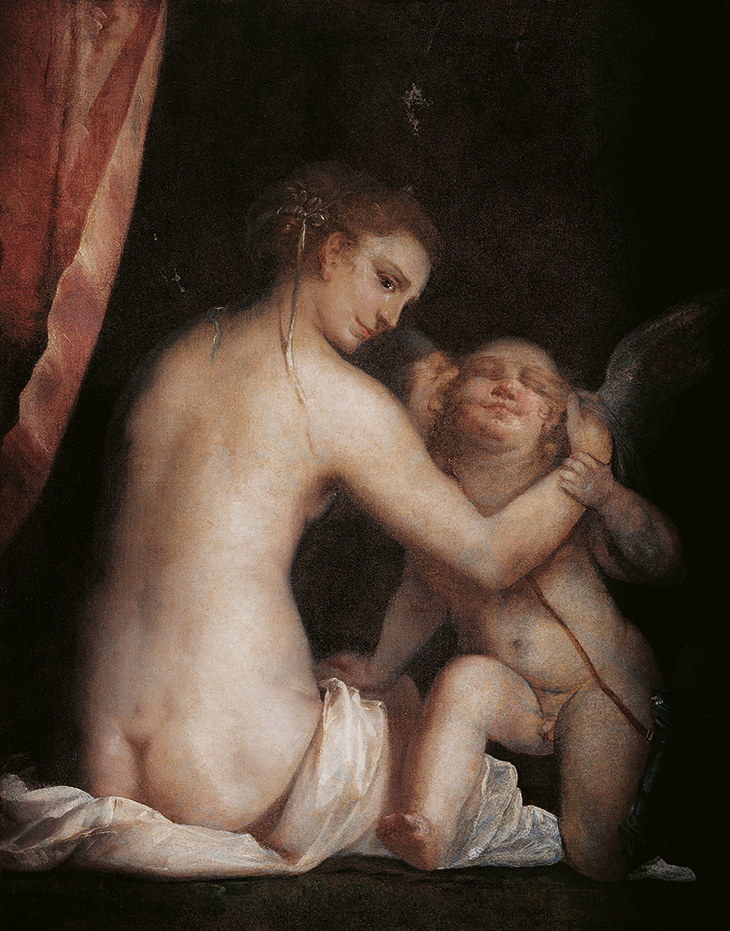
Venus Blindfolding Cupid (c. 1565), Luca Cambiaso
Yet Ricci has also always been attracted to what he describes as the art of visionary madness, by the surreal, and by what is prosaic and popular. The museum’s cabinet of curiosities includes a narwhal horn, once thought to have belonged to the unicorn. Its walls are lined with particularly gruesome vanitas paintings and sculptures. Centre stage among the skulls is a decomposing head by Jacopo Ligozzi (1547–1627), its flesh and rotten teeth seething with maggots and flies.
Only superficially more benign are the drawings of the Codex Seraphinianus, first published in two volumes in 1981 – Ricci’s most extraordinary publication. These meticulously detailed explications of the bizarre and the fantastical illustrate an encyclopaedia of an imaginary world conceived by the artist Luigi Serafini in the 1970s and written in a language still understood only by its creator. Certainly its pages are at home in the Labirinto della Masone complex – another visionary creation, in effect a Gesamtkunstwerk, an all-embracing art work expressing the life and taste of one man.
Unlimited access from just $16 every 3 months
Subscribe to get unlimited and exclusive access to the top art stories, interviews and exhibition reviews.

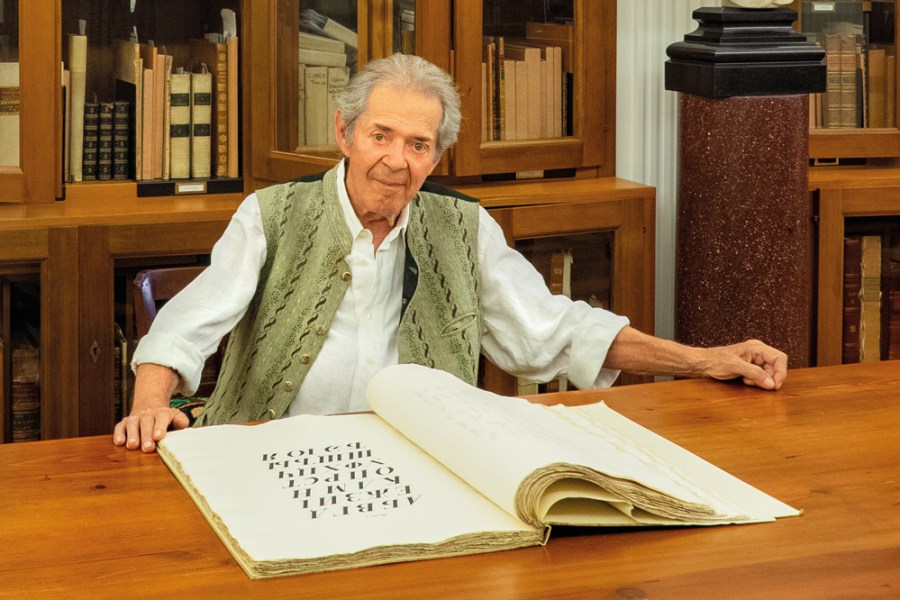
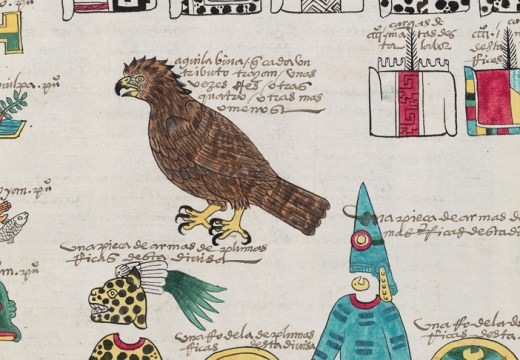
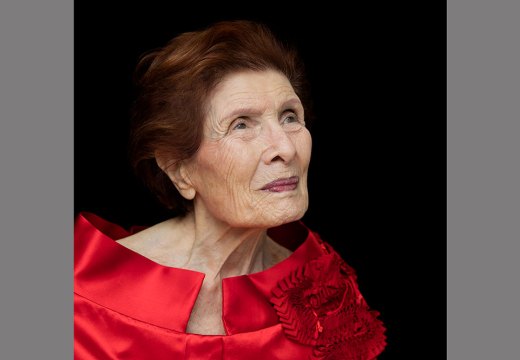
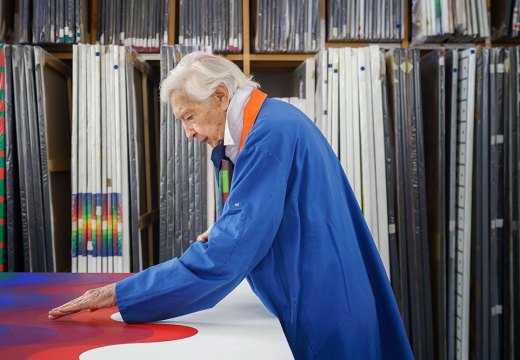









![Masterpiece [Re]discovery 2022. Photo: Ben Fisher Photography, courtesy of Masterpiece London](http://www.apollo-magazine.com/wp-content/uploads/2022/07/MPL2022_4263.jpg)
It’s time for the government of London to return to its rightful home